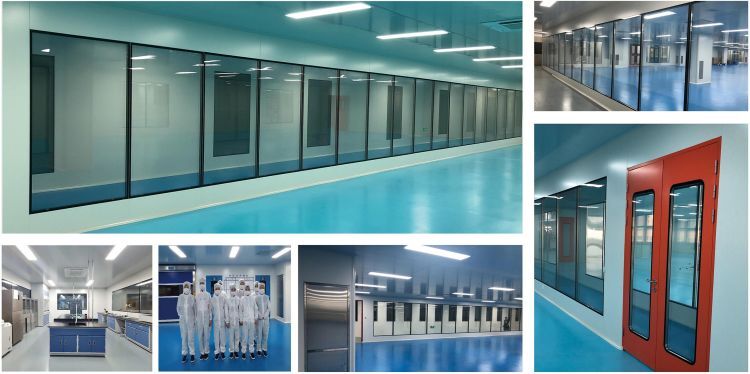Lab Clean Room: Definition and Importance
- 2024-02-03
- View 10
Clean rooms are essential in laboratory environments, where the control of airborne particles and other contaminants is critical to maintaining the quality and safety of products and processes. In this article, we will explore the concept of a lab clean room its importance in laboratory settings, and the key elements that make up an effective clean room.

Lab Clean Room: Definition and Importance
A lab clean room is a controlled environment designed to maintain a low level of airborne particles and other contaminants, such as microbes and chemicals Clean rooms are used in a wide range of laboratory applications, including electronics, pharmaceuticals, biotechnology, and medical device manufacturing.
The importance of clean rooms in laboratory environments lies in their ability to protect the products and processes being developed or manufactured from contamination. Contamination can negatively impact product quality, safety, and efficacy, leading to costly product recalls, delays, and potential harm to consumers.
Key Elements of an Effective Lab Clean Room
To be effective, a lab clean room must be designed and maintained to meet specific requirements for particle and contaminant control. Key elements of an effective lab clean room include:
Design and Construction
The design and construction of a clean room are critical to its ability to control particles and contaminants. Clean rooms must be constructed with materials that do not shed particles, such as stainless steel, and must be designed with features that prevent the buildup and spread of contaminants, such as smooth surfaces and sealed doors.
Airflow and Filtration
Airflow and filtration systems are essential components of a clean room, as they work to remove airborne particles and contaminants from the environment. Clean rooms use high-efficiency particulate air (HEPA) filters to capture particles as small as 0.3 microns, and air handling systems to control the direction and velocity of airflow.
Monitoring and Control
To ensure a clean room is functioning as intended, it must be monitored and controlled to maintain the desired levels of particle and contaminant control. Clean rooms use automated monitoring systems to track temperature, humidity, particle counts, and other variables, and may use control systems to adjust airflow and filtration as needed.
Personnel and Equipment
Personnel and equipment are also important factors in maintaining the cleanliness of a clean room. Personnel must wear appropriate cleanroom attire, such as gowns, gloves, and masks, and equipment must be properly cleaned and maintained to prevent the release of particles and contaminants.
Conclusion
In conclusion, lab clean rooms are essential in laboratory environments where the control of airborne particles and contaminants is critical to maintaining the quality and safety of products and processes. Effective lab clean rooms must be designed and constructed with specific features that prevent the buildup and spread of contaminants, and must use appropriate airflow and filtration systems, monitoring and control systems, and personnel and equipment practices to maintain particle and contaminant control.
FAQs
1. What is a clean room classification?
A clean room classification is a system used to classify clean rooms based on the maximum number of particles allowed per cubic meter of air. The classification system is used to ensure that clean rooms meet the specific requirements of different laboratory applications.
2. How often should a lab clean room be cleaned?
The frequency of lab clean room cleaning will depend on the specific needs of the laboratory and the clean room. Generally, clean rooms should be cleaned on a regular basis to maintain particle and contaminant control.
3. Can clean room equipment be reused?
Yes, clean room equipment can be reused after it has been properly cleaned and maintained. Equipment must be cleaned and maintained to prevent the release of particles and contaminants that could impact the cleanliness of the clean room environment.
4. Are there any regulations regarding clean rooms?
Yes, regulations regarding clean rooms in laboratory environments do exist. These regulations may vary by region and jurisdiction, and may include requirements for clean room design construction, and operation. For example, the US Food and Drug Administration (FDA) has guidelines for the use of clean rooms in pharmaceutical manufacturing, while the European Union has established the ISO 14644-1 standard for clean room classification. Adherence to these regulations and standards is crucial for ensuring the safety and efficacy of laboratory procedures and products.
5. What are the benefits of using a lab clean room?
The benefits of using a lab clean room include improved product quality, safety, and efficacy, reduced risk of contamination and product recalls, and increased efficiency and productivity in laboratory processes.
6. What is a laminar flow hood?
A laminar flow hood is a type of clean room equipment that uses high-efficiency particulate air (HEPA) filters to provide a clean environment for laboratory procedures that require a sterile or particle-free environment.
7. Can clean rooms be used for other purposes besides laboratory environments?
Yes, clean rooms can be used for a variety of purposes beyond laboratory environments, including electronics manufacturing, medical device manufacturing, and semiconductor fabrication.
Kwang Cleanroom is proud to offer examples of a variety of our cleanroom projects below. CGMP Standards, Cleanroom Prevent Cross-contamination, Biological Cleanroom, Cleanroom Design Services, Cleanroom Maintenance Services, Benefits of a Cleanroom, Cosmetics Gmp Clean Workshop.
